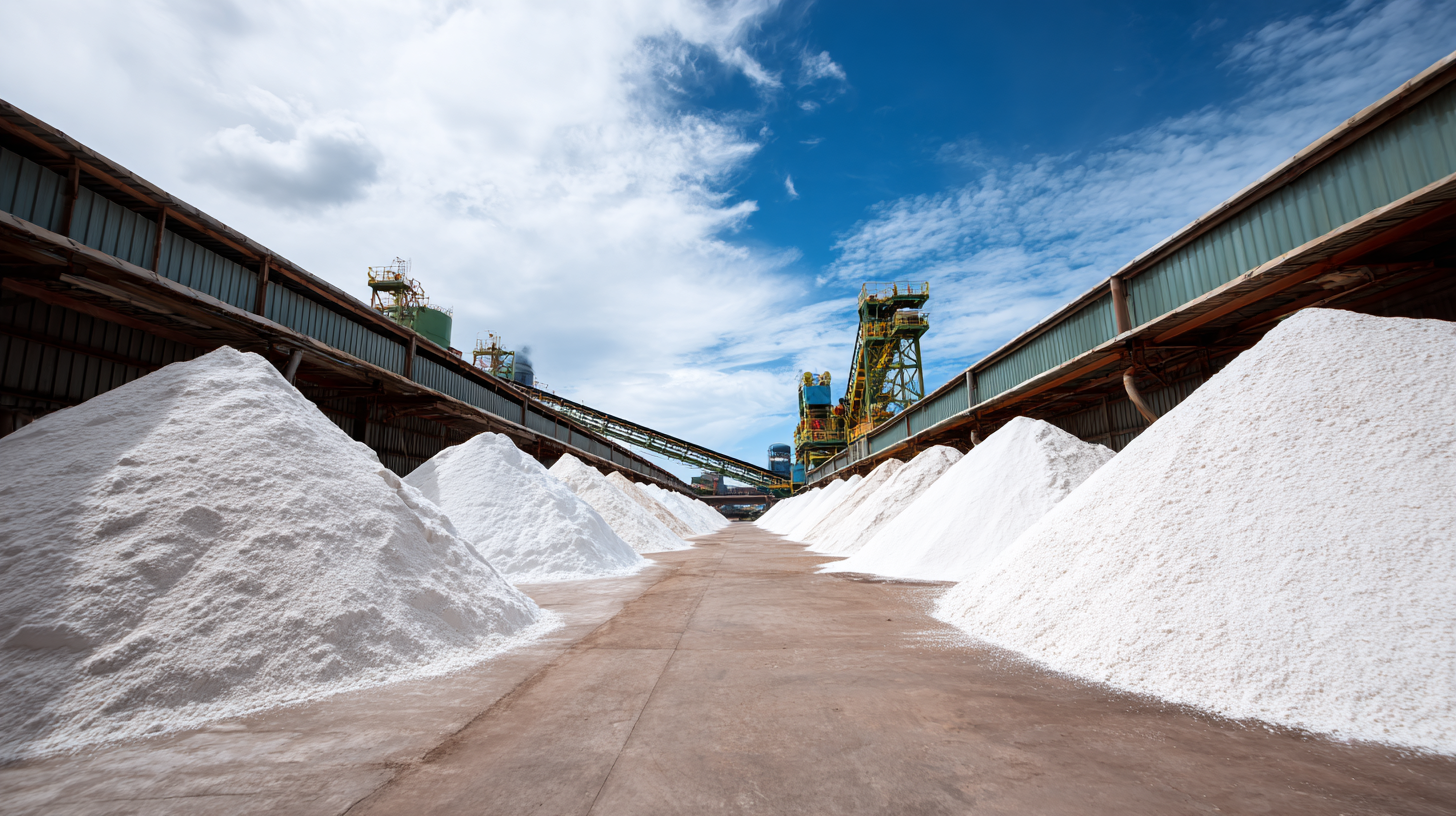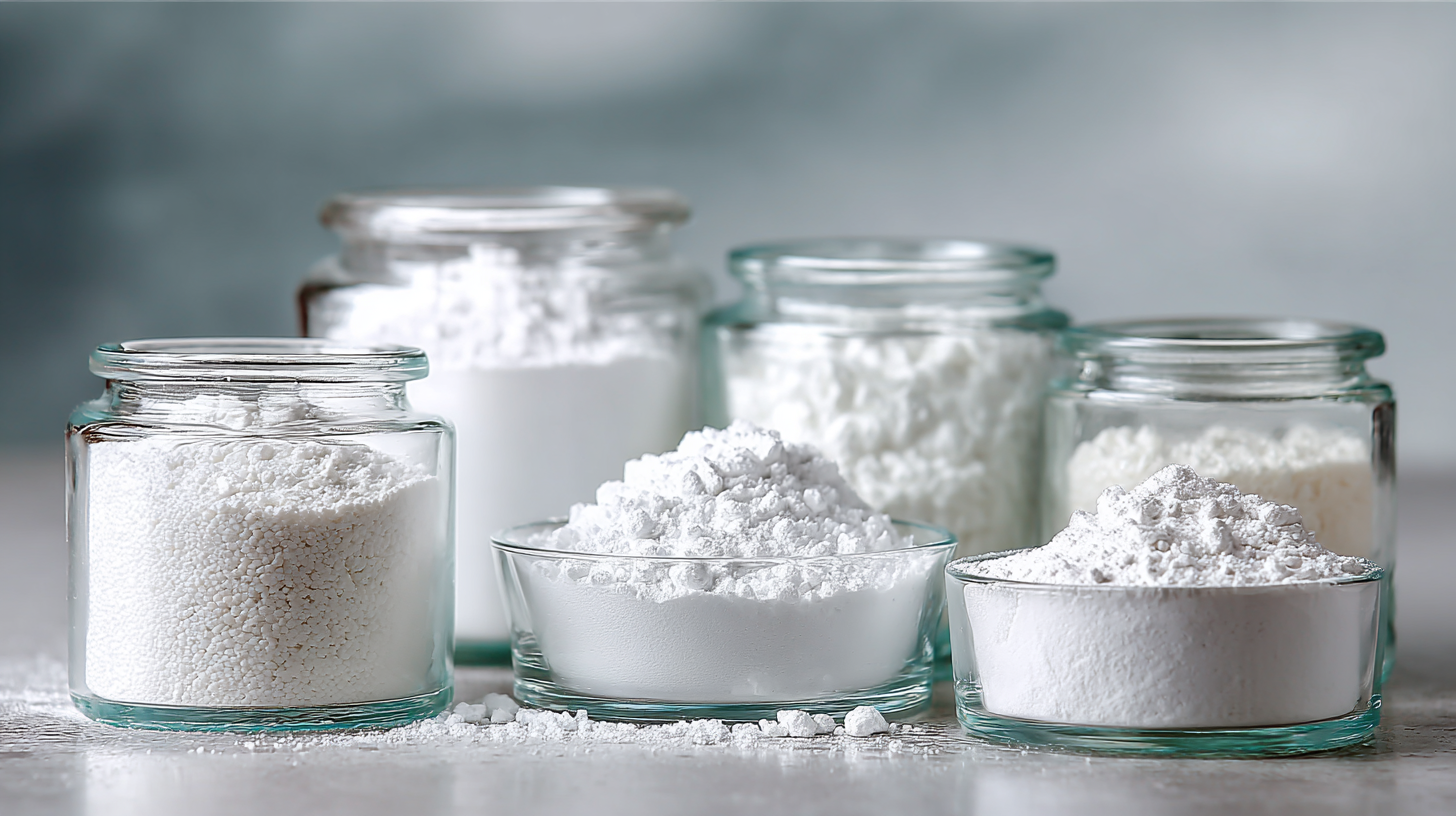In the realm of industrial materials, the choice of substances can significantly influence operational efficiency and product quality. Alumina White, a finely derived form of aluminum oxide, has increasingly gained traction across various sectors due to its unparalleled characteristics and benefits. According to a recent market analysis by Grand View Research, the global alumina market is projected to reach USD 36.69 billion by 2025, underscoring the growing demand for high-performance materials like Alumina White. This advanced material not only offers excellent wear resistance and high thermal stability but also stands out due to its unique white color, making it an ideal choice for applications in ceramics, electronics, and even abrasives. With these compelling advantages, industries are exploring the unmatched potential that Alumina White brings to enhance productivity and sustainability in their operations.

Alumina White has emerged as a game-changing material in various industrial applications, primarily due to its superior strength and durability. This high-performance ceramic compound is known for its exceptional hardness and resistance to wear and corrosion, making it ideal for use in demanding environments. Industries ranging from aerospace to automotive are increasingly turning to Alumina White, attracted by its ability to withstand high temperatures and mechanical stresses that would compromise other materials.
The growing demand for high-quality industrial materials has contributed to significant market expansion. As industries seek to enhance their production processes and ensure the longevity of their products, the market for materials like Alumina White is set for robust growth. The engineering plastics market, estimated to grow from $126.58 billion in 2024 to $180.69 billion by 2031, reflects a broader trend where durability and performance take precedence. In a similar vein, the nylon market, renowned for its resilience and versatility, is projected to drive further innovations in industrial applications. This emphasis on strength and durability highlights the critical role that advanced materials like Alumina White will play in shaping the future of industrial manufacturing.
Alumina White, due to its exceptional properties, has emerged as a cost-effective solution for various industrial applications. According to a report by the International Journal of Advanced Manufacturing Technology, Alumina White exhibits a life cycle cost that is 20-30% lower than traditional materials like zirconia and silicon carbide, primarily due to its lower wear rate and reduced maintenance costs. This comparison highlights its efficiency not only in initial expenditures but also in long-term operational performance.
The reduced cost of Alumina White is attributed to its high durability and thermal stability, which minimizes the need for frequent replacements. A study conducted by Market Research Future indicates that industries using Alumina White can achieve savings of up to 15% on material replacements over five years. Furthermore, its versatility in applications ranging from abrasives to ceramics ensures that businesses can leverage its benefits across multiple sectors, thereby maximizing their investment. As companies continuously seek ways to optimize their budgets, the economic advantages of adopting Alumina White are becoming increasingly apparent.
 Alumina white, a high-purity aluminum oxide material, demonstrates remarkable versatility across various industrial applications. This adaptability is supported by industry research, indicating that the global alumina market is projected to reach $63 billion by 2025, driven by increasing demand in sectors such as ceramics, electronics, and manufacturing. With its excellent thermal and chemical stability, alumina white can be utilized in high-performance coatings, enhancing durability and resistance to wear in automotive and aerospace industries, where minimizing weight while maximizing strength is essential.
Alumina white, a high-purity aluminum oxide material, demonstrates remarkable versatility across various industrial applications. This adaptability is supported by industry research, indicating that the global alumina market is projected to reach $63 billion by 2025, driven by increasing demand in sectors such as ceramics, electronics, and manufacturing. With its excellent thermal and chemical stability, alumina white can be utilized in high-performance coatings, enhancing durability and resistance to wear in automotive and aerospace industries, where minimizing weight while maximizing strength is essential.
Moreover, alumina white plays a crucial role in advanced filtration systems. Reports from the Environmental Protection Agency highlight that materials like alumina can remove heavy metals and other contaminants more efficiently than traditional filtration media, making it invaluable in water treatment processes. Its porous structure allows for significant absorption capacities, which not only improves overall filtration effectiveness but also complies with stricter environmental regulations. The flexibility of alumina white to integrate into diverse applications—from refractory materials to catalyst supports—underscores its importance in meeting contemporary industrial challenges.
Alumina white offers exceptional thermal resistance, making it a vital material in various manufacturing processes. Its capability to withstand high temperatures without degrading ensures that products maintain their integrity and performance under extreme conditions. This property is especially significant in industries dealing with thermal management, where maintaining optimal temperature conditions can greatly influence the efficiency and safety of operations.
Recent technological advancements highlight the advantages of innovative manufacturing techniques, such as 3D printing, in enhancing thermal insulation properties. Using additive manufacturing, companies can create porous structures that effectively manage thermal conduction, thereby improving overall thermal resistance. For instance, incorporating materials like alumina into these processes yields superior thermal management solutions that are tailored to specific industrial needs.
**Tips:** When selecting materials for high-temperature applications, consider the thermal stability and compatibility of alumina white with other components. Additionally, explore modern manufacturing methods that allow for customization in thermal management applications, ensuring optimal performance tailored to your specific industry requirements. Experimenting with hybrid materials can also produce innovative solutions that capitalize on the strengths of alumina's thermal resistance properties.
This bar chart illustrates the enhanced thermal resistance and its importance in manufacturing processes. Each benefit is quantified based on its relevance and impact in industrial applications.
Alumina white, a high-purity aluminum oxide, is gaining traction in various industrial sectors due to its significant environmental benefits. One of the most notable advantages is its low environmental footprint compared to other materials. Alumina white is derived from bauxite, and the refining process yields minimal waste, making it an eco-friendlier option for manufacturers. This sustainable sourcing aligns with increasing global demands for greener industrial practices, enabling companies to enhance their sustainability profiles.
Moreover, the durability and longevity of alumina white contribute to reduced resource consumption over time. Its excellent thermal stability and resistance to chemicals ensure that products last longer, which minimizes the need for frequent replacements. This not only conserves raw materials but also reduces energy consumption associated with production and transportation. By adopting alumina white in their operations, industries can significantly lower greenhouse gas emissions while promoting a more sustainable supply chain. Thus, integrating this material is a proactive step toward achieving environmental goals in industrial applications.

